Tobias Spichtig
Everything No One Ever Wanted
19 Jan - 28 Apr 2024
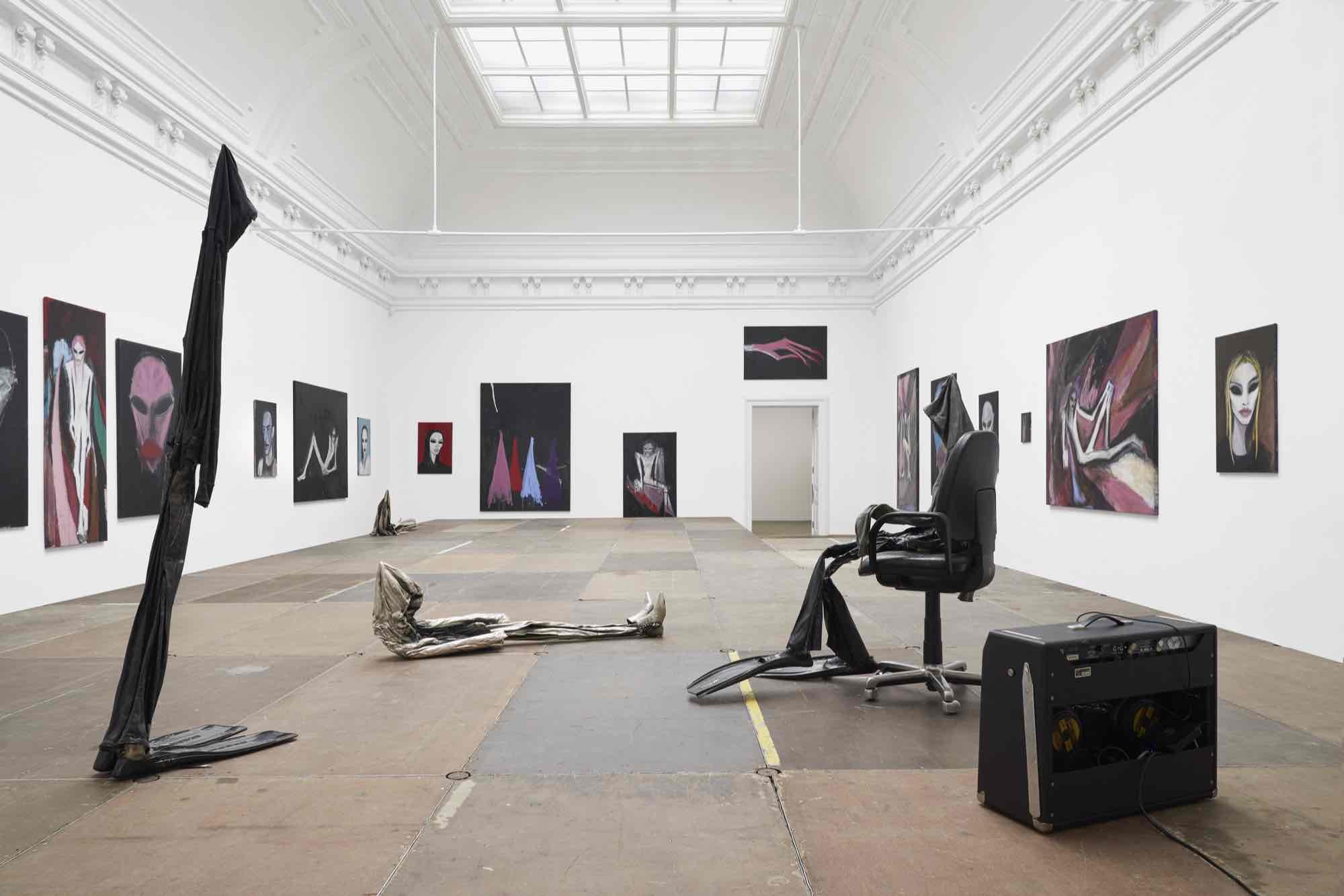
Tobias Spichtig, Everything No One Ever Wanted, Kunsthalle Basel, 2024, exhibition view, photo: Philipp Hänger / Kunsthalle Basel
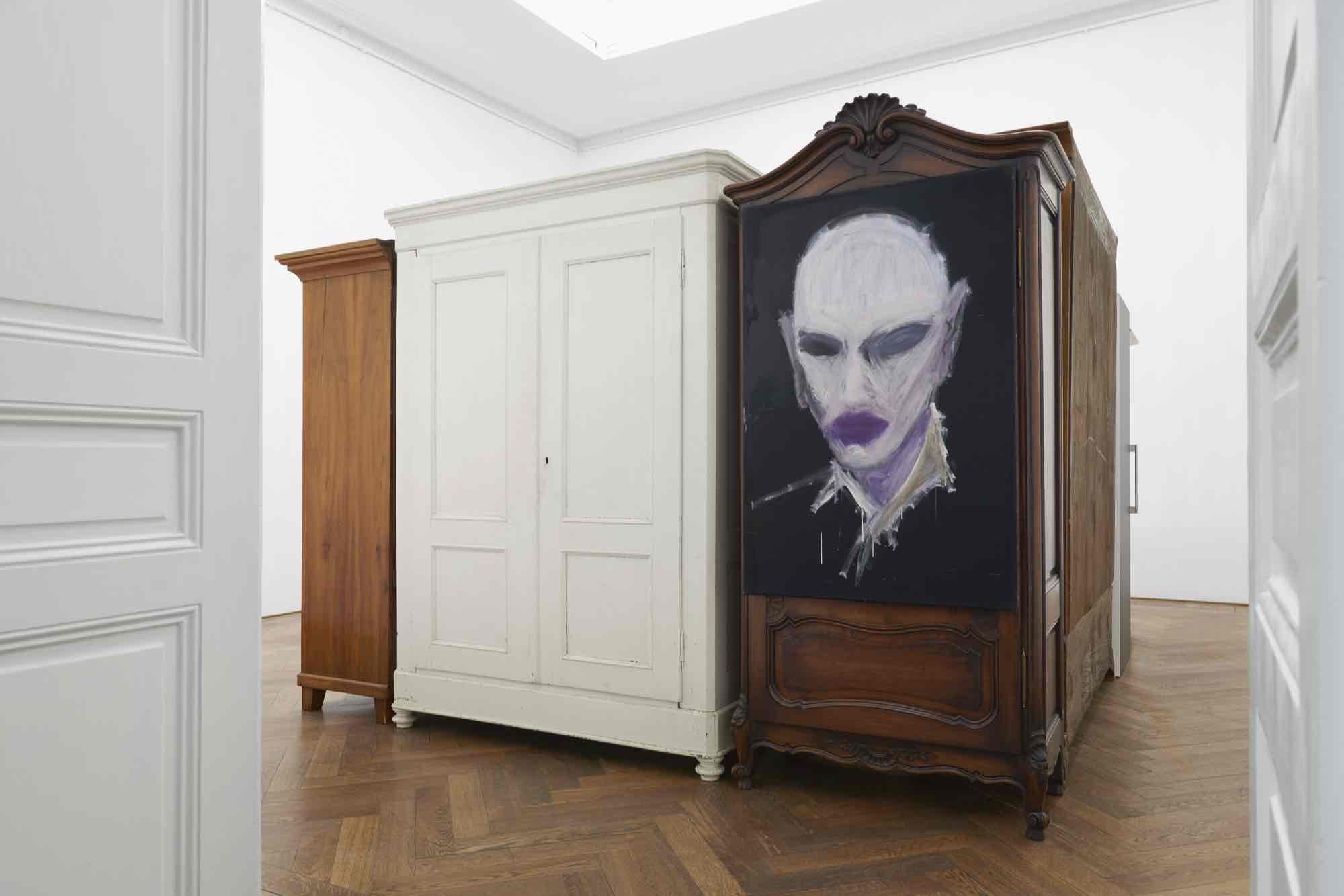
Tobias Spichtig, Everything No One Ever Wanted, Kunsthalle Basel, 2024, exhibition view, photo: Philipp Hänger / Kunsthalle Basel
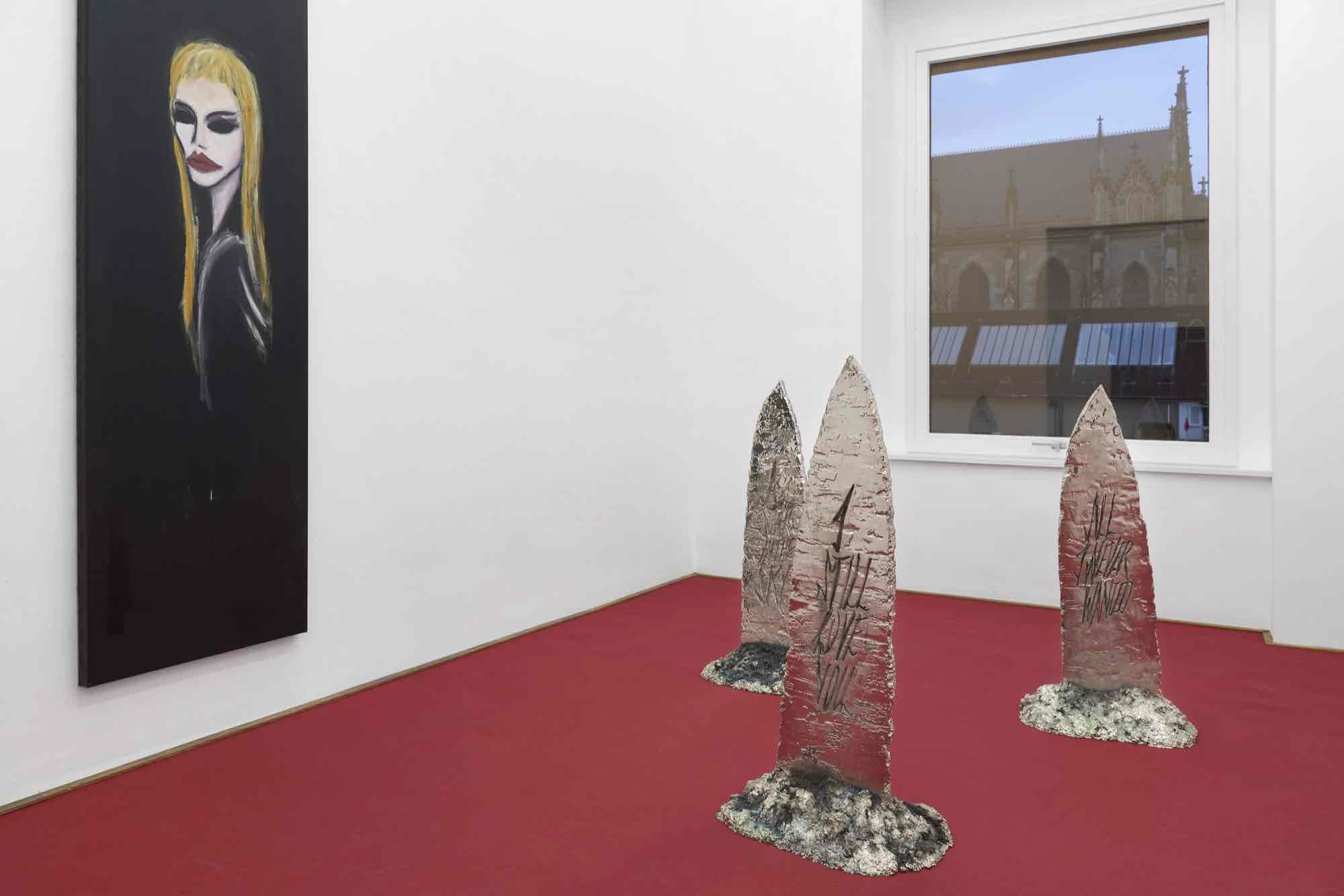
Tobias Spichtig, Everything No One Ever Wanted, Kunsthalle Basel, 2024, exhibition view, photo: Philipp Hänger / Kunsthalle Basel

Tobias Spichtig, Everything No One Ever Wanted, Kunsthalle Basel, 2024, exhibition view, photo: Philipp Hänger / Kunsthalle Basel
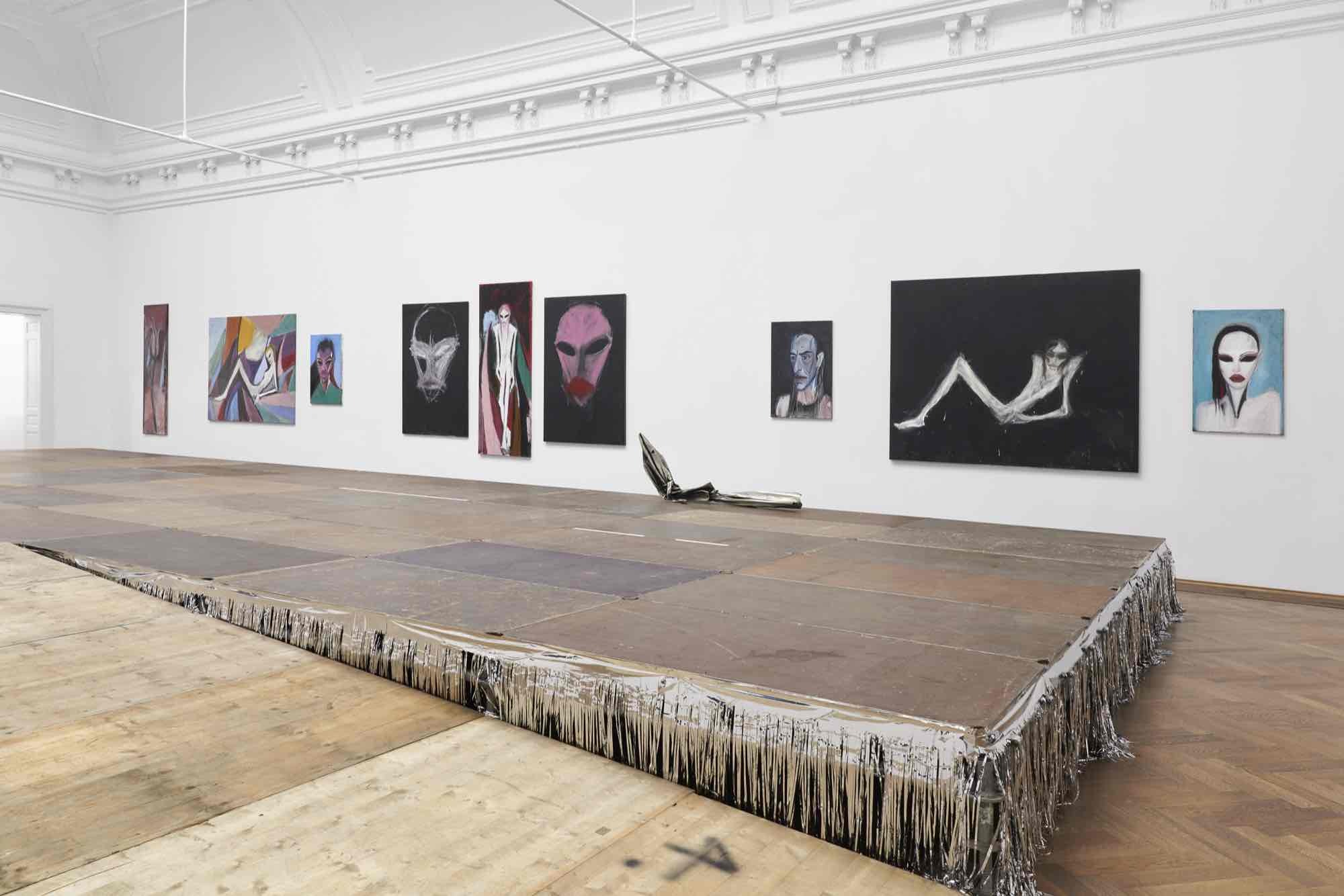
Tobias Spichtig, Everything No One Ever Wanted, Kunsthalle Basel, 2024, exhibition view, photo: Philipp Hänger / Kunsthalle Basel
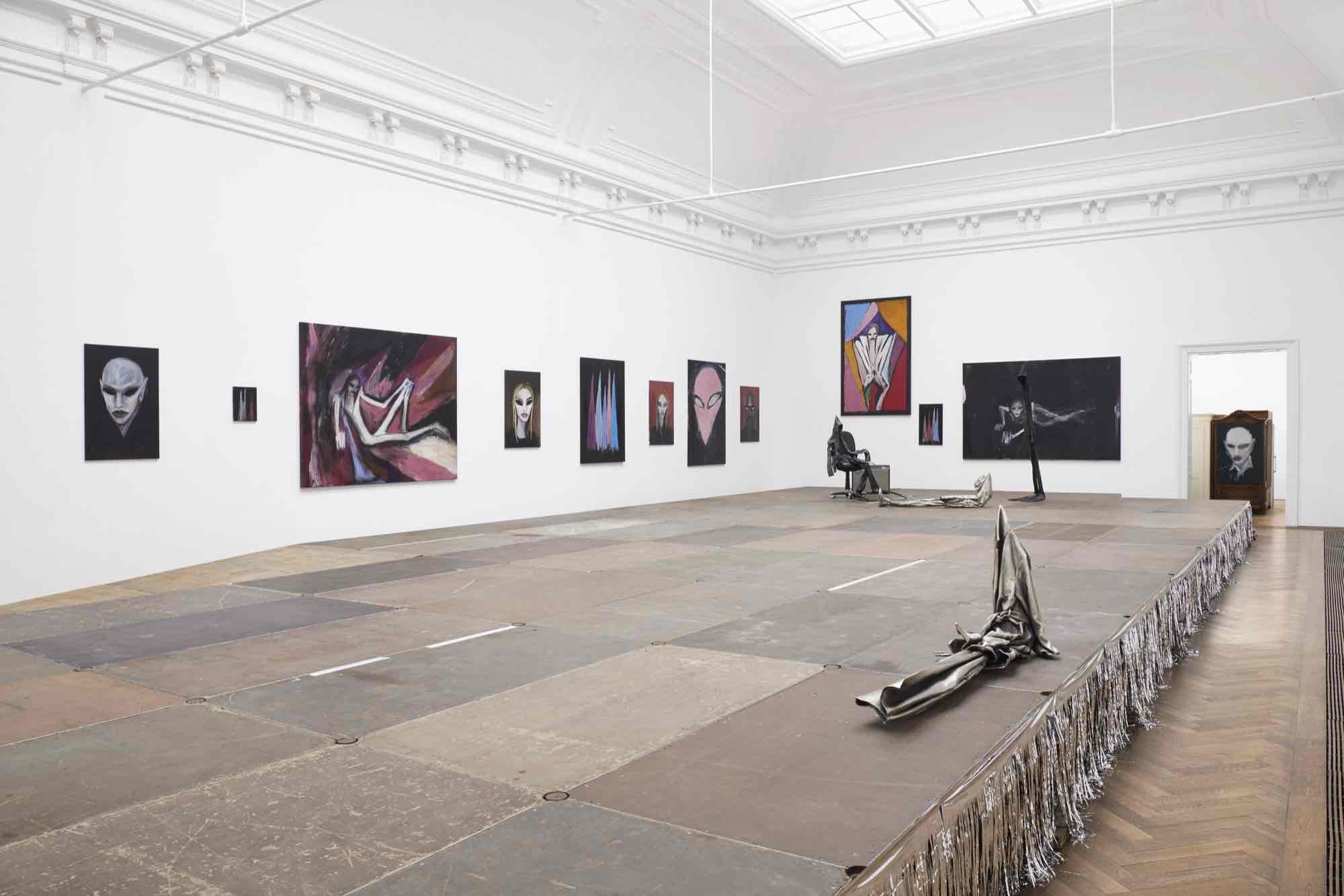
Tobias Spichtig, Everything No One Ever Wanted, Kunsthalle Basel, 2024, exhibition view, photo: Philipp Hänger / Kunsthalle Basel

Tobias Spichtig, Everything No One Ever Wanted, Kunsthalle Basel, 2024, exhibition view, photo: Philipp Hänger / Kunsthalle Basel
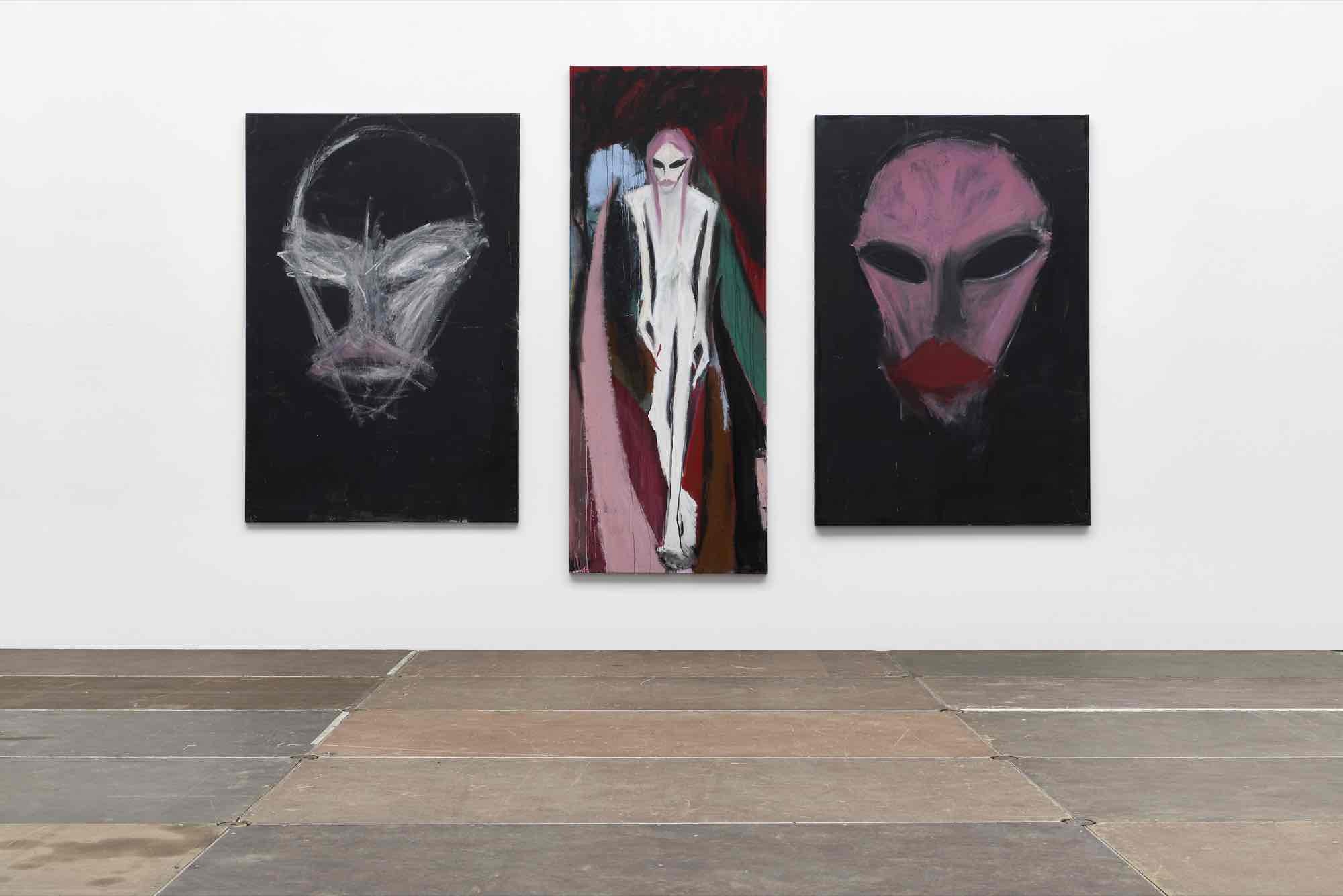
Tobias Spichtig, Everything No One Ever Wanted, Kunsthalle Basel, 2024, exhibition view, photo: Philipp Hänger / Kunsthalle Basel
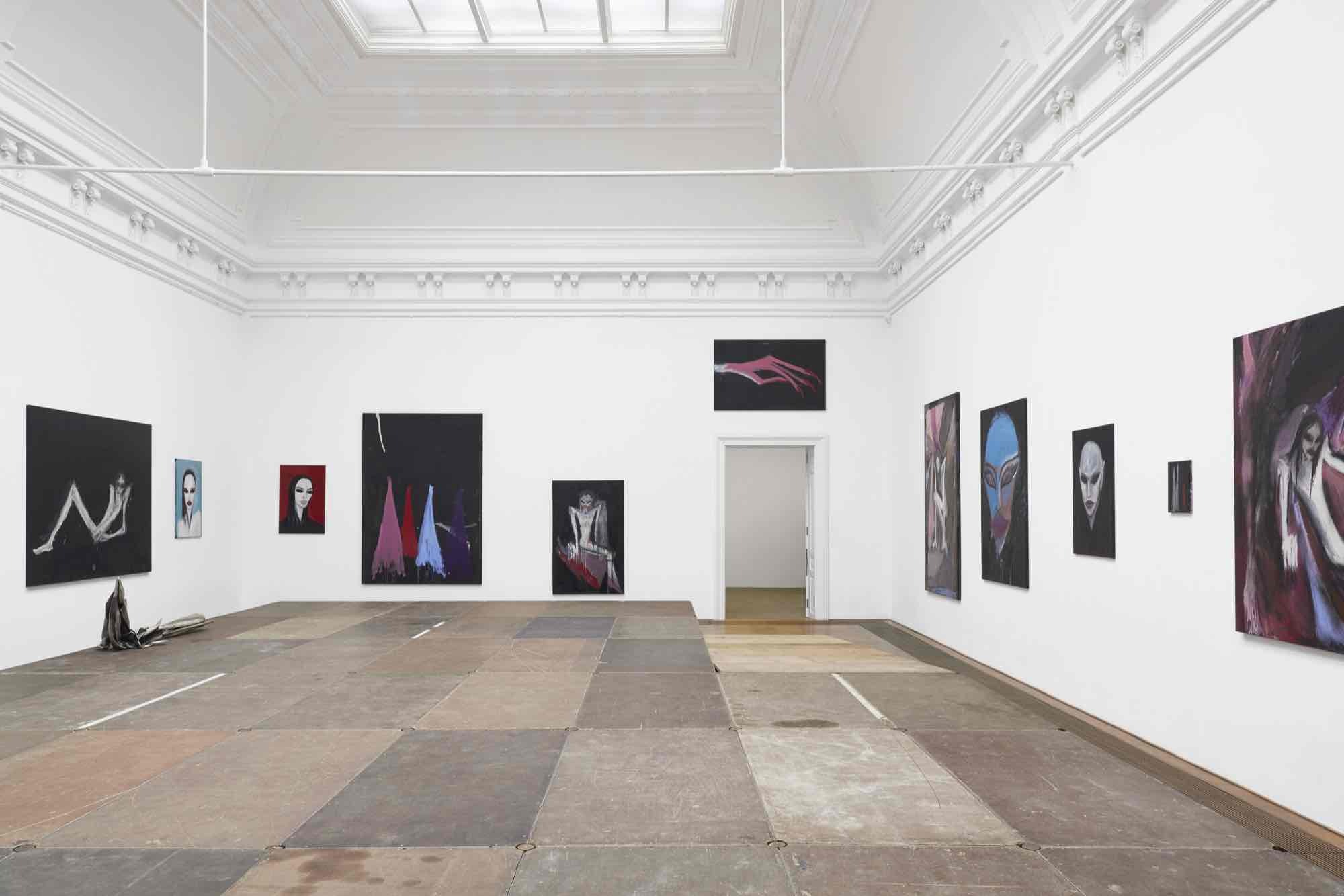
Tobias Spichtig, Everything No One Ever Wanted, Kunsthalle Basel, 2024, exhibition view, photo: Philipp Hänger / Kunsthalle Basel
In painting, drips are to be avoided. Generally considered blunders, they are thought to interrupt what a painter might otherwise be trying to represent: this is what painting tutorials will tell you. Except Tobias Spichtig doesn’t seem to agree.
Conspicuous drips can be found on nearly all his canvases. They flow, without the Swiss artist wishing to tame them, from the peaks of his mountain abstractions, the feet of his nudes, and from sullen faces—each a portrait of a friend, model, designer, or actor. To make the latter, he primarily works from photo- graphs, rarely from live models, often looking to several different images to create his com- posite vision. Frequently, there is enough of a likeness that you might (just) recognize the subject. Still, with or without their eyes paint- ed in, this is an eerie bunch, all cheekbones and contouring, as pale as vampires seen in raking light.
That they all seem undead is not just formal because, for Spichtig, it goes deeper than that: “There’s something embarrassing about vampires,” the artist declares. “Like Udo Kier in the film Blood for Dracula [1974]. He’s totally embarrassing. Maybe painting is a vampire. It’s endlessly embarrassing. Both the act of painting and the paintings themselves.
Perhaps that explains the self-deprecating quality of the title Everything No One Ever Wanted. It amounts to an assertion that within this exhibition is unloved stuff, worthy only of rejection—forlorn and without value. Yet, of all of Spichtig’s exhibitions, this one—his largest to date—marks a turning point at which the artist has abandoned his tendency almost to conceal his paintings, as if in embarrassment. Here, the “unwanted” is not just not hidden but, in fact, finally exposed. Ostentatiously.
In the past, it was barely possible to circulate within the artist’s exhibitions. He filled spaces with accumulations of used domestic consumer goods (worn couches, yellowing mattresses, phased-out air conditioning units), rendering his paintings on the walls behind them often only partially visible. The latter peeked out “like penises from under fig leaves,” as one critic wittily noted. Now, the artist doesn’t push the visitor out of the room. In- stead, he installed a massive stage, and visitors have almost no choice but to step up onto it and have their gaze raised to view the paintings.
But make no mistake: Spichtig’s attachment to the stuff often left on the side of the road persists. He now simply compartmentalizes: the exhibition’s second room is filled with various used wardrobes, with a single uncanny portrait stuck upon rather than behind them. They are a reminder of what his accumulations had always hinted at: commodities cannot fully satisfy the covetousness they are designed to elicit, which we know even as we still consume them. So, we discard them, only to consume again new ones like them. Capitalism has made vampires of us all.
In the last room, a trio of nickel-plated gravestones stands as if propped on earthen mounds, all shimmering and silvery. A bloodred carpet lay beneath. The gravestones are carved with the artist’s characteristic scrawl, spelling out “All I Never Wanted” or “I Still Love You,” like sappy pop song titles. Slightly cartoonish but also inescapably morbid, this endpoint to the exhibition conveys a brooding Twilight vibe, while cinching the contradictions across Spichtig’s œuvre, between the absurd and the sincerely serious.
Entrancing minimalist guitar riffs echo in the spaces. Spichtig asked the musician and composer Mick Barr (Ocrilim)—whose music the artist listened to avidly while painting— to develop a specially conceived soundscape for the show. The idea was to render each artwork a protagonist in something larger than itself: “The models and portraits are a bit like actors, a cast for the show. The exhibition thus becomes somewhat like a tragic comedy, with its own soundtrack.”
Spichtig’s giant stage/plinth in the first room is surrounded by his take on painting’s traditional genres: the portrait, the still life, the landscape, the nude. Yet to call these latter works “nudes” may be misleading, as the term suggests art history’s canon of voluptuous females—Titian’s Venus of Urbino (1534) or Édouard Manet’s Olympia (1863). His, on the other hand, are often androgynous and always angular, uneasily posing in their abstract backgrounds. Their hair is stringy, they have thickened black slits for eyes, just as in some of his portraits. They hunch forward or lean back, stick-like and emaciated, more humanoid praying mantises than people
Besides a stray rose or a disembodied hand (“still lives”), several “landscapes” appear across the exhibition. The assembly of pointed forms against textured black backgrounds is named for the Alpine mountains of the artist’s youth but barely manages to evoke them. They are com- posed of rough brushstrokes whose awkward triangulation more readily recalls colored witches’ hats than the serenity of snowy Swiss mountains.
Through Spichtig’s brush, bodies, faces, flow- ers, or mountains never quite emerge from their planar surfaces. His particular approach to painting eradicates depth and volume, delineating people and objects by means of hard lines, ensuring that each picture’s subject holds its pose in strange, morbid stillness. They remind more of works by much-maligned French Existentialist painter Bernard Buffet— revered in the 1950s, then fallen from art world grace—than so much celebrated contemporary painting. You might ask if all of this, Buffet or Spichtig, is simply bad painting. Spichtig per- sistently queries what counts as interesting or accomplished in art while doggedly trying to avoid the pitfalls of artistic convention and the consensus of good taste. The result courts a look of amateurism while reminding us that the “amateur” is the lover of a thing. And it is evident in his research into painterly techniques, art history, and attempts to capture a person or mountain in paint that Spichtig loves painting.
No matter the represented genre, the vacilla- tions in and out of representation feel weirdly earnest and obsessive, naïve and spooky all at once. The artist admits: “I guess I believe in some sort of material spiritualism. Some animism. That material is always itself and something else as well. I still find it quite magical that we can put some material on a canvas, and suddenly, there’s something that makes one feel a certain way and starts to tell a story.” It’s this feeling or the emer- gence of a story that Spichtig is after. A little bit goth, a little bit mystic, the characters in his exhibition-as-theater seem doomed, hailing from some alien otherworld. They look straight at you, almost through you, to the point of making you wonder if—although mostly without eyes—they can actually see you.
Spichtig’s sculptures are as gaunt and elongated as his painted figures, built as they are from used clothing dipped in resin that is sometimes additionally nickel-plated. Hoodies and pants create their own readymade anthropomorphics. Like contemporary versions of the bodies found in Pompeii, forever frozen in lava, Spichtig’s sculptures seem embalmed, mummified in their branded sportswear. Are they harbingers of our era’s coming catastrophes? Here, his entourage of eviscerated bodies are caught, casually perched on an office chair, wearing a suit and scuba fins, or, in one nickel-plated example, “legs” stiffly stretched out, shoes perfectly pointed up. For all their nonchalance, like the paintings, they insinuate an unspecified malaise.
And fittingly so. Spichtig said he started mak- ing his so-called Geister or “ghost” sculptures because he felt lonely and wanted to fill his apartment with friends. He considers them “classic, figurative sculptures,” which invariably recall dystopian versions of that other Swiss sculptor of emaciated humanity, Alberto Giacometti. Giacometti repeatedly articulated figures, all but removing the singularity of personhood in a way that rendered them anonymous but universal. Spichtig’s figures are, too, both blank and haunting, no one and everyone.
Is all of this what no one ever wanted? For years, Spichtig has looked to fashion, domestic consumer goods, and other desirable things as inspiration for his paintings, even as he partly hid the results. Now, he revels in not hiding at all. If, in his exhibition, the artworks tremor with malaise, angst, or intimated catastrophes across their shared ghostly pallor, it may be because Spichtig has finally found the apt painterly tone for our contemporary condition. And though he is trying to overcome being embarrassed by the act of painting, Spichtig will not spare you a feeling of complicity in his emotion, whether you want it or not.
Conspicuous drips can be found on nearly all his canvases. They flow, without the Swiss artist wishing to tame them, from the peaks of his mountain abstractions, the feet of his nudes, and from sullen faces—each a portrait of a friend, model, designer, or actor. To make the latter, he primarily works from photo- graphs, rarely from live models, often looking to several different images to create his com- posite vision. Frequently, there is enough of a likeness that you might (just) recognize the subject. Still, with or without their eyes paint- ed in, this is an eerie bunch, all cheekbones and contouring, as pale as vampires seen in raking light.
That they all seem undead is not just formal because, for Spichtig, it goes deeper than that: “There’s something embarrassing about vampires,” the artist declares. “Like Udo Kier in the film Blood for Dracula [1974]. He’s totally embarrassing. Maybe painting is a vampire. It’s endlessly embarrassing. Both the act of painting and the paintings themselves.
Perhaps that explains the self-deprecating quality of the title Everything No One Ever Wanted. It amounts to an assertion that within this exhibition is unloved stuff, worthy only of rejection—forlorn and without value. Yet, of all of Spichtig’s exhibitions, this one—his largest to date—marks a turning point at which the artist has abandoned his tendency almost to conceal his paintings, as if in embarrassment. Here, the “unwanted” is not just not hidden but, in fact, finally exposed. Ostentatiously.
In the past, it was barely possible to circulate within the artist’s exhibitions. He filled spaces with accumulations of used domestic consumer goods (worn couches, yellowing mattresses, phased-out air conditioning units), rendering his paintings on the walls behind them often only partially visible. The latter peeked out “like penises from under fig leaves,” as one critic wittily noted. Now, the artist doesn’t push the visitor out of the room. In- stead, he installed a massive stage, and visitors have almost no choice but to step up onto it and have their gaze raised to view the paintings.
But make no mistake: Spichtig’s attachment to the stuff often left on the side of the road persists. He now simply compartmentalizes: the exhibition’s second room is filled with various used wardrobes, with a single uncanny portrait stuck upon rather than behind them. They are a reminder of what his accumulations had always hinted at: commodities cannot fully satisfy the covetousness they are designed to elicit, which we know even as we still consume them. So, we discard them, only to consume again new ones like them. Capitalism has made vampires of us all.
In the last room, a trio of nickel-plated gravestones stands as if propped on earthen mounds, all shimmering and silvery. A bloodred carpet lay beneath. The gravestones are carved with the artist’s characteristic scrawl, spelling out “All I Never Wanted” or “I Still Love You,” like sappy pop song titles. Slightly cartoonish but also inescapably morbid, this endpoint to the exhibition conveys a brooding Twilight vibe, while cinching the contradictions across Spichtig’s œuvre, between the absurd and the sincerely serious.
Entrancing minimalist guitar riffs echo in the spaces. Spichtig asked the musician and composer Mick Barr (Ocrilim)—whose music the artist listened to avidly while painting— to develop a specially conceived soundscape for the show. The idea was to render each artwork a protagonist in something larger than itself: “The models and portraits are a bit like actors, a cast for the show. The exhibition thus becomes somewhat like a tragic comedy, with its own soundtrack.”
Spichtig’s giant stage/plinth in the first room is surrounded by his take on painting’s traditional genres: the portrait, the still life, the landscape, the nude. Yet to call these latter works “nudes” may be misleading, as the term suggests art history’s canon of voluptuous females—Titian’s Venus of Urbino (1534) or Édouard Manet’s Olympia (1863). His, on the other hand, are often androgynous and always angular, uneasily posing in their abstract backgrounds. Their hair is stringy, they have thickened black slits for eyes, just as in some of his portraits. They hunch forward or lean back, stick-like and emaciated, more humanoid praying mantises than people
Besides a stray rose or a disembodied hand (“still lives”), several “landscapes” appear across the exhibition. The assembly of pointed forms against textured black backgrounds is named for the Alpine mountains of the artist’s youth but barely manages to evoke them. They are com- posed of rough brushstrokes whose awkward triangulation more readily recalls colored witches’ hats than the serenity of snowy Swiss mountains.
Through Spichtig’s brush, bodies, faces, flow- ers, or mountains never quite emerge from their planar surfaces. His particular approach to painting eradicates depth and volume, delineating people and objects by means of hard lines, ensuring that each picture’s subject holds its pose in strange, morbid stillness. They remind more of works by much-maligned French Existentialist painter Bernard Buffet— revered in the 1950s, then fallen from art world grace—than so much celebrated contemporary painting. You might ask if all of this, Buffet or Spichtig, is simply bad painting. Spichtig per- sistently queries what counts as interesting or accomplished in art while doggedly trying to avoid the pitfalls of artistic convention and the consensus of good taste. The result courts a look of amateurism while reminding us that the “amateur” is the lover of a thing. And it is evident in his research into painterly techniques, art history, and attempts to capture a person or mountain in paint that Spichtig loves painting.
No matter the represented genre, the vacilla- tions in and out of representation feel weirdly earnest and obsessive, naïve and spooky all at once. The artist admits: “I guess I believe in some sort of material spiritualism. Some animism. That material is always itself and something else as well. I still find it quite magical that we can put some material on a canvas, and suddenly, there’s something that makes one feel a certain way and starts to tell a story.” It’s this feeling or the emer- gence of a story that Spichtig is after. A little bit goth, a little bit mystic, the characters in his exhibition-as-theater seem doomed, hailing from some alien otherworld. They look straight at you, almost through you, to the point of making you wonder if—although mostly without eyes—they can actually see you.
Spichtig’s sculptures are as gaunt and elongated as his painted figures, built as they are from used clothing dipped in resin that is sometimes additionally nickel-plated. Hoodies and pants create their own readymade anthropomorphics. Like contemporary versions of the bodies found in Pompeii, forever frozen in lava, Spichtig’s sculptures seem embalmed, mummified in their branded sportswear. Are they harbingers of our era’s coming catastrophes? Here, his entourage of eviscerated bodies are caught, casually perched on an office chair, wearing a suit and scuba fins, or, in one nickel-plated example, “legs” stiffly stretched out, shoes perfectly pointed up. For all their nonchalance, like the paintings, they insinuate an unspecified malaise.
And fittingly so. Spichtig said he started mak- ing his so-called Geister or “ghost” sculptures because he felt lonely and wanted to fill his apartment with friends. He considers them “classic, figurative sculptures,” which invariably recall dystopian versions of that other Swiss sculptor of emaciated humanity, Alberto Giacometti. Giacometti repeatedly articulated figures, all but removing the singularity of personhood in a way that rendered them anonymous but universal. Spichtig’s figures are, too, both blank and haunting, no one and everyone.
Is all of this what no one ever wanted? For years, Spichtig has looked to fashion, domestic consumer goods, and other desirable things as inspiration for his paintings, even as he partly hid the results. Now, he revels in not hiding at all. If, in his exhibition, the artworks tremor with malaise, angst, or intimated catastrophes across their shared ghostly pallor, it may be because Spichtig has finally found the apt painterly tone for our contemporary condition. And though he is trying to overcome being embarrassed by the act of painting, Spichtig will not spare you a feeling of complicity in his emotion, whether you want it or not.

